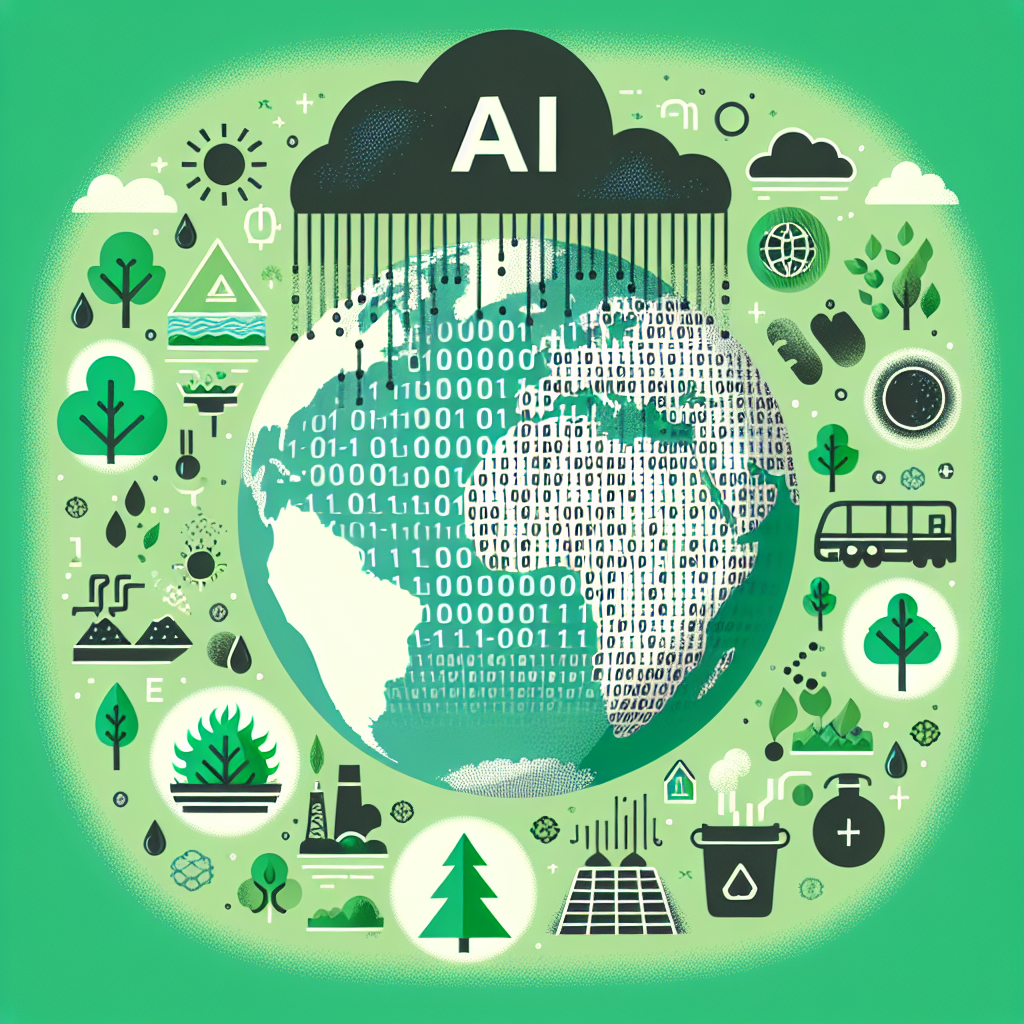Artificial Intelligence (AI) has the potential to revolutionize many aspects of our lives, from improving healthcare to enhancing transportation systems. However, as AI technology continues to advance, there are growing concerns about its potential impact on the environment. In particular, there are risks associated with resource depletion and pollution that could have significant consequences if not properly managed.
Resource Depletion
One of the primary concerns about the use of AI technology is its potential to deplete natural resources. AI systems require significant amounts of energy to operate, which can put a strain on already limited resources. For example, the training and operation of AI algorithms require large amounts of data, which in turn requires significant computational power. This can lead to increased energy consumption and a higher demand for resources such as electricity and water.
Additionally, the production of AI hardware, such as servers and data centers, also requires resources such as rare earth metals and minerals. The extraction and processing of these materials can have negative environmental impacts, including deforestation, water pollution, and habitat destruction. As the demand for AI technology continues to grow, so too will the pressure on these finite resources.
Pollution
Another significant concern related to AI and the environment is the potential for increased pollution. The energy consumption associated with AI systems can lead to higher carbon emissions, contributing to climate change and air pollution. In addition, the production and disposal of AI hardware can result in the release of harmful chemicals and pollutants into the environment.
For example, the manufacturing of electronic devices such as smartphones and computers involves the use of toxic substances such as lead, mercury, and cadmium. If not properly disposed of, these materials can leach into the soil and water, contaminating ecosystems and posing a risk to human health. Similarly, the disposal of electronic waste, including outdated AI hardware, can result in pollution and environmental degradation if not handled responsibly.
Mitigating the Risks
Despite these potential risks, there are steps that can be taken to mitigate the environmental impact of AI technology. One approach is to improve the energy efficiency of AI systems by developing more efficient algorithms and hardware. Researchers are also exploring the use of renewable energy sources, such as solar and wind power, to power AI systems and reduce their carbon footprint.
In addition, efforts can be made to reduce the use of harmful materials in the production of AI hardware and improve the recycling and disposal processes for electronic waste. By implementing more sustainable practices throughout the lifecycle of AI technology, we can help minimize its environmental impact and ensure a more sustainable future.
FAQs
Q: How does AI contribute to resource depletion?
A: AI technology requires significant amounts of energy to operate, which can put a strain on resources such as electricity and water. The production of AI hardware also requires resources such as rare earth metals and minerals, which can contribute to environmental degradation.
Q: What are the environmental impacts of AI technology?
A: The energy consumption associated with AI systems can lead to higher carbon emissions and air pollution. The manufacturing and disposal of AI hardware can result in the release of harmful chemicals and pollutants into the environment.
Q: What steps can be taken to reduce the environmental impact of AI technology?
A: Efforts can be made to improve the energy efficiency of AI systems, use renewable energy sources, reduce the use of harmful materials in AI hardware, and improve the recycling and disposal processes for electronic waste.
In conclusion, while AI technology has the potential to bring about significant benefits, it is important to consider its potential impact on the environment. By taking steps to mitigate the risks of resource depletion and pollution, we can ensure that AI technology is developed and deployed in a way that is sustainable and environmentally responsible.

